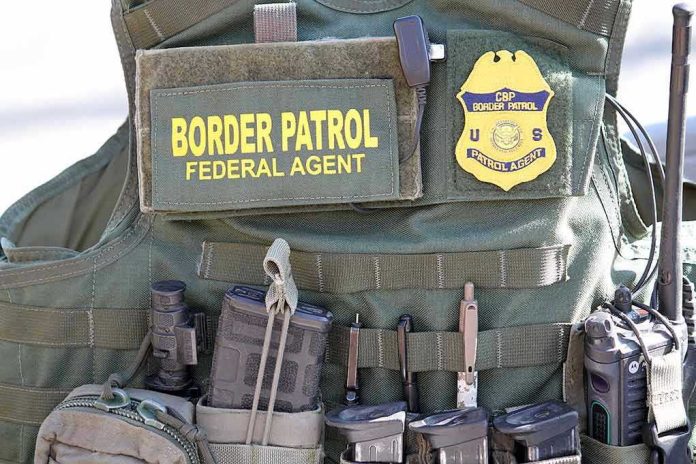
Federal agents at a Portland ICE facility blocked an ambulance carrying an injured protester and threatened to shoot the driver if he attempted to leave with his patient.
Story Snapshot
- Federal agents detained an ambulance for up to 20 minutes outside a Portland ICE facility on October 5, 2025
- An agent threatened to shoot and arrest the ambulance driver if he moved the vehicle
- The protester inside suffered a fractured collarbone and required immediate hospital transport
- Internal incident reports and dispatch logs corroborate the confrontation between federal law enforcement and emergency medical personnel
- The incident remains under investigation by American Medical Response and the Federal Protective Service
When Emergency Response Meets Federal Force
The ambulance arrived at the U.S. Immigration and Customs Enforcement facility in South Portland around 9:20 p.m. to transport a 32-year-old protester with a suspected fractured collarbone. What should have been a routine medical evacuation turned into a 10 to 20 minute standoff. Federal agents surrounded the vehicle, blocking its departure. One agent made his position unmistakably clear: move the ambulance and face lethal consequences. The ambulance crew, trained to navigate crisis situations, found themselves trapped between their duty to their patient and a federal officer’s gun.
This wasn’t a split-second decision made in the fog of chaos. The delay stretched long enough for dispatch logs to document it, for internal reports to be filed, and for the protester’s condition to worsen. Emergency medical personnel are trained to remain neutral in conflicts, to provide care regardless of circumstance or allegiance. Federal agents are trained to maintain security and enforce law. On this October evening, those two missions collided with disturbing clarity.
The Context That Made Confrontation Inevitable
Portland’s ICE facility had become ground zero for protests against federal immigration enforcement. The evening of October 5 carried extra voltage. Hours earlier, President Trump had attempted to deploy National Guard forces from other states after a federal judge blocked Oregon’s Guard from federal service. U.S. District Judge Karin Immergut expanded her order, barring National Guard relocation for federal duty anywhere in Oregon. Protesters gathered outside the ICE facility, emboldened by the legal rebuke to federal overreach. Federal agents, frustrated by the judicial constraints and facing an energized crowd, were primed for conflict.
This wasn’t the first time federal agents and Portland protesters had clashed. The city had witnessed repeated confrontations since 2020, with federal forces deployed over local objections. Emergency medical services had been called numerous times to treat injuries from these encounters. But threatening EMS personnel with lethal force crossed a line that even hardened observers found difficult to justify. The unwritten compact between law enforcement and emergency responders—that medical personnel remain off-limits—appeared to have dissolved in the tension outside that facility.
What the Records Reveal
Internal incident reports from American Medical Response paint a picture of deliberate obstruction. The ambulance crew documented the threat, the delay, and the eventual departure under federal escort. Dispatch logs captured real-time communications. Multiple media outlets obtained these records independently, cross-referencing details that aligned across every source. Willamette Week broke the story on October 14, nine days after the incident. The Daily Beast, The Independent, and other outlets confirmed the account through their own document reviews and source interviews.
Teamsters 223, representing the ambulance crew, issued a statement supporting their members and demanding accountability. The union emphasized that EMS personnel responded with professionalism despite the threat, but warned that such incidents endanger lives and undermine the fundamental trust required for emergency services to function. American Medical Response announced it was collaborating with the Federal Protective Service to review the incident, though neither organization has publicly identified the agent involved or announced disciplinary action.
The Troubling Pattern This Incident Reveals
Threatening to shoot an ambulance driver represents more than an isolated lapse in judgment. It signals a breakdown in the protocols that govern law enforcement interaction with emergency medical services. EMS personnel depend on the understanding that they can enter volatile situations, provide care, and leave without becoming targets themselves. When federal agents disregard that understanding, they don’t just threaten one ambulance crew—they jeopardize the entire emergency response system’s ability to function during civil unrest.
The federal government’s expansion of authority at immigration facilities has created gray zones where normal rules seem suspended. Local emergency services, bound by professional ethics and local protocols, find themselves operating in spaces where federal agents answer to different chains of command and face minimal local accountability. This incident exposed the dangers of that arrangement. A protester with a broken collarbone became leverage in a power struggle that had nothing to do with medicine and everything to do with control.
Sources:
The Daily Beast – ICE Barbie’s Goons Allegedly Threatened to Shoot Ambulance Driver
The New Republic – ICE Agent Threatens to Shoot Ambulance Driver
The Independent – ICE Portland Protest Ambulance Delayed
JEMS – Federal Officers Delayed, Threatened to Shoot and Arrest Ambulance Crew at ICE Facility
Evrim Ağacı – Portland Ambulance Crew Threatened by Federal Agents












